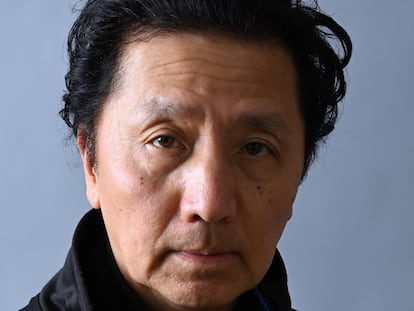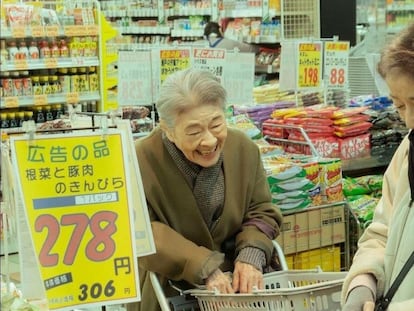Cats inspired Japanese culture centuries before the social media fervor
From Hello Kitty and Doraemon to the works of Haruki Murakami, Hayao Miyazaki and Yukio Mishima, felines have long been a key figure in the Japanese imagination
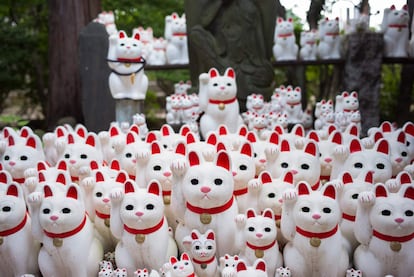
Long before cat photos went viral on social media, Japan had a deep devotion to felines, which was proudly reflected in its culture. From folklore legends and anime films to literary classics and traditional poetry, the Asian country’s fascination with cats extends to daily life — statistics confirm that cats are the most popular pet in Japan.
“Today’s cat culture began with the rise of the consumer society in the 1970s and 1980s,” explains literary critic Kai Nagase, who mentions Hello Kitty, the mouthless cat who rivals Mickey Mouse in worldwide sales of licensed products. Hello Kitty helped internationalize the Japanese cultural phenomenon Kawaii, which emphasizes cuteness, as seen in characters with childlike characteristics such as very large eyes and tiny mouths.
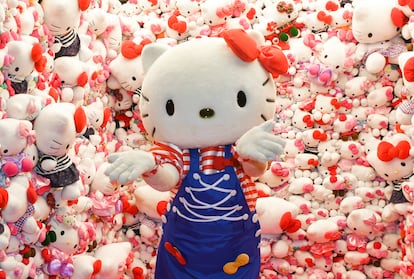
Nagase confesses that his favorite fictional character is Doraemon, the robot cat from the 22nd century, whose manga and anime stories have been a part of Japanese childhood for five decades. “The inspiration to dream that we have received from Doraemon is immeasurable,” says the critic, highlighting the “soft power” of both Doraemon and Hello Kitty. In 2008, Doraemon was named Japan’s first “animation ambassador,” and in 2017, Kitty was appointed the Special Ambassador of the International Year of Sustainable Tourism Development.
The popularity of Doraemon and Kitty contrasts with the obscurity of their more cultured predecessor — the protagonist of I Am a Cat — the first novel by the famous writer Natsume Sōseki (1867-1916), which is commonly read in Japanese schools. Soseki’s cat — which remains nameless throughout the story — is a scathing critic of human selfishness and also satirizes the Westernization of Japanese society at the end of the 19th century. “It is not a story about a cat, but a story told by a cat. That makes it unique in modern Japanese literature, and its style has influenced many later creations,” says Nagase.
Kittens shipped from China
The most widely cited theory on the origin of Japanese cats suggests that cats sent from China in the 6th century to protect Buddhist scriptures from rats. Japanese folklore is filled with supernatural beings, including many cats. This may be due to the belief in the transmutation of beings and the fact that Buddhism and Shintoism — the religion of Japan — has a strong respect for nature.

In his extensive catalog of yokai (supernatural beings), Nagase mentions a giant two-tailed cat called a nekomata, which terrorized the mountains surrounding the ancient capital of Nara in the 12th century. Tales of fantastic cats reached their peak in the Edo period (1603-1868), a period of isolation when the Japanese archipelago was filled with domestic cats. This period also saw the development of some of Japan’s most enduring cultural contributions, such as kabuki theater, haiku poetry, sushi and ukiyo-e woodblock prints.
Edo printmakers were prolific in illustrating Japan’s legends about supernatural felines that supplant their masters in festive nocturnal universes. The best-known haiku poet, Matsuo Basho (1644-1694), devoted several works to the observation of feline behavior, including a haiku dedicated to a cat wasted by passion and malnutrition: “The she cat / Grown thin / From love and barley.”
At the entrance to many shops, figures of cats with a raised paw welcome in customers. This figure — called maneki-neko — also dates from the Edo period, and is venerated in the Tokyo temple of Gotokuji.
Yukio Mishima (1925-1970), an author who loved cats and is remembered for carrying out seppuku — ritual suicide by disembowelment, followed by decapitation with the help of an assistant — uses the death and dissection of a cat for the emblematic scene in his novel The Sailor Who Fell from Grace with the Sea.
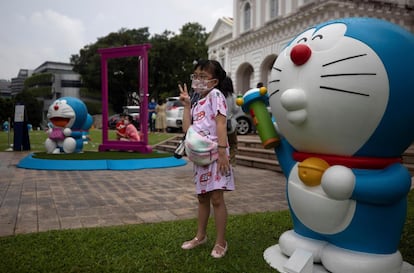
The most popular cat names in Japan have two syllables, like Mimi or Tama. Esteemed Japanese author Haruki Murakami used some of these names in his novel Kafka on the Shore, a story where one of the main characters has the power to speak to cats and another collects cat heads in his freezer.
There are even specialist bookstores on cats. Jieun Yoo, a Korean citizen, is the founder of Necoya Books (which loosely translates to the “cat bookshop”), located in the Tachikawa district, west of Tokyo. In the 24-square-meter space, she organizes exhibitions, sells illustrated books, essays, language learning manuals with cat characters, as well as stickers, bags and dolls.
“One of the reasons I opened my bookstore was to increase the number of cat lovers,” she says. The bookseller explains that in honor of the Japanese onomatopoeia for meowing, which coincides with the Japanese phonetics of the number 2, she opened the space on February 22, Cat Day, 2022.
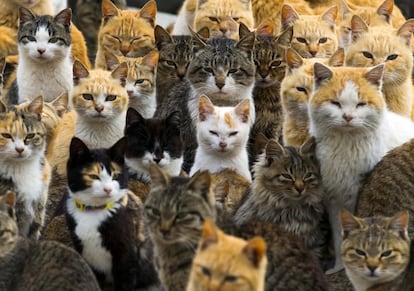
Cat bookshops join the many cat cafés (neko-cafe) where diners can look at and — depending on the mood of the kitties — touch and hold the animals while they have a drink.
Hayao Miyazaki and his famed anime production company Studio Ghibli have a long list of feline characters, including the Nekobasu (Cat Bus), a fusion of animal and vehicle that plays a supporting role in My Neighbor Totoro.
Japan’s feline population has been competing with the human population for years, and some remote, depopulated islands, such as Aoshima, are home to 30 times more cats than people. Cats are the most popular pet in Japan, and according to statistics from the Japan Pet Food Manufacturers Association, there were 9.06 million registered cat owners in 2023.
The total number of pets in Japan, including dogs, was 15.9 million, more than the 14 million children under the age of 14 recorded in the census that same year.
Sign up for our weekly newsletter to get more English-language news coverage from EL PAÍS USA Edition
Tu suscripción se está usando en otro dispositivo
¿Quieres añadir otro usuario a tu suscripción?
Si continúas leyendo en este dispositivo, no se podrá leer en el otro.
FlechaTu suscripción se está usando en otro dispositivo y solo puedes acceder a EL PAÍS desde un dispositivo a la vez.
Si quieres compartir tu cuenta, cambia tu suscripción a la modalidad Premium, así podrás añadir otro usuario. Cada uno accederá con su propia cuenta de email, lo que os permitirá personalizar vuestra experiencia en EL PAÍS.
¿Tienes una suscripción de empresa? Accede aquí para contratar más cuentas.
En el caso de no saber quién está usando tu cuenta, te recomendamos cambiar tu contraseña aquí.
Si decides continuar compartiendo tu cuenta, este mensaje se mostrará en tu dispositivo y en el de la otra persona que está usando tu cuenta de forma indefinida, afectando a tu experiencia de lectura. Puedes consultar aquí los términos y condiciones de la suscripción digital.

